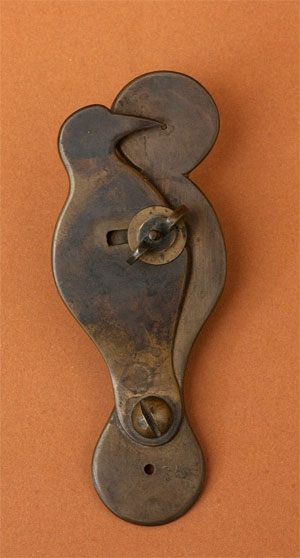 |
|||||
 |
 |
||||
 |
|||||
 |
 |
||||
Stephen Gray Water Microscope (No. 138) |
|||||||||
| Made: c1695 Made by: Stephen Gray Made in: England |
|||||||||
 |
|||||||||
 |
|||||||||
|
Water drop as a lens
|
|||||||||
 |
|||||||||
|
Imaging
|
|||||||||
|
Stephen Gray (1666 –1736), the son of an English dyer, was a pioneer in the study of astronomy and physics. Gray is most remembered as being one of the first of the natural philosophers to study static electricity and the conduction of electricity through media. He was a contemporary with Newton and a close friend of Flamsteed, but was not recognized at the time because of his social status and lack of formal education. Early in his career Gray created optical instruments, presumably for astronomical observations through his association with Flamsteed, and was an early pioneer in the microscopical study of infusoria and the creation of glass lenses. In 1696 he published an article in the Philosophical Transactions of the Royal Society (p280) describing an instrument called the "Water Microscope". This instrument was one of the earliest experimental microscopes using materials other than glass to make the microscope lens. Gray used water as the lens for his instrument. Later he used fish-glue, as suggested by Hooke and Borellus. Much later Brewster (1837) created lenses of various organic liquids (amber, varnish, copal, Canada Balsam), all of which created high-quality, but fragile lenses. This instrument in the Golub Collection therefore is one of the pioneering experiments in the evolution of the microscope. The Gray Water Microscope consists of two flat plates of brass bolted together at one end to form a pivot point. Distal to this pivot, on the bottom plate, is a hole 0.8mm in diameter. The hole is counter-sunk, with the larger opening on the eye-side surface. This creates a depression into which a drop of water can be placed. The water droplet forms a lens with two spherical surfaces, a larger diameter surface toward the bottom, or eye-side, and a smaller diameter surface on the sample side facing the second brass plate. The sample can be either a solid sample placed on the pointed end of the top plate (which looks remarkably bird-like), or a liquid sample (an "infusoria" for example) placed into a smaller hole in the top plate. Both samples can be positioned opposite the water lens. Focus is accomplished by turning the thumbscrew to place the sample closer or further from the lens. Magnification is approximately 25x. Imaging is quite good, but resolution is poor at <10µm. |
|||||||||
| Featured 05/2011 | |||||||||